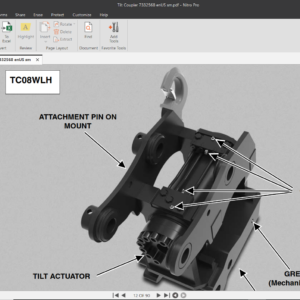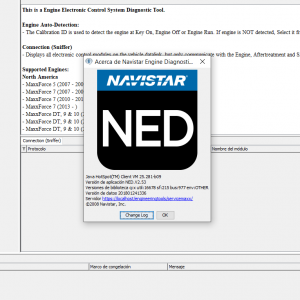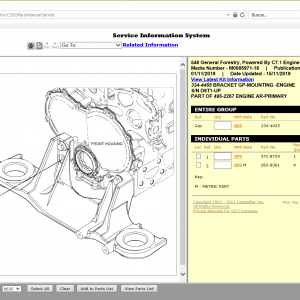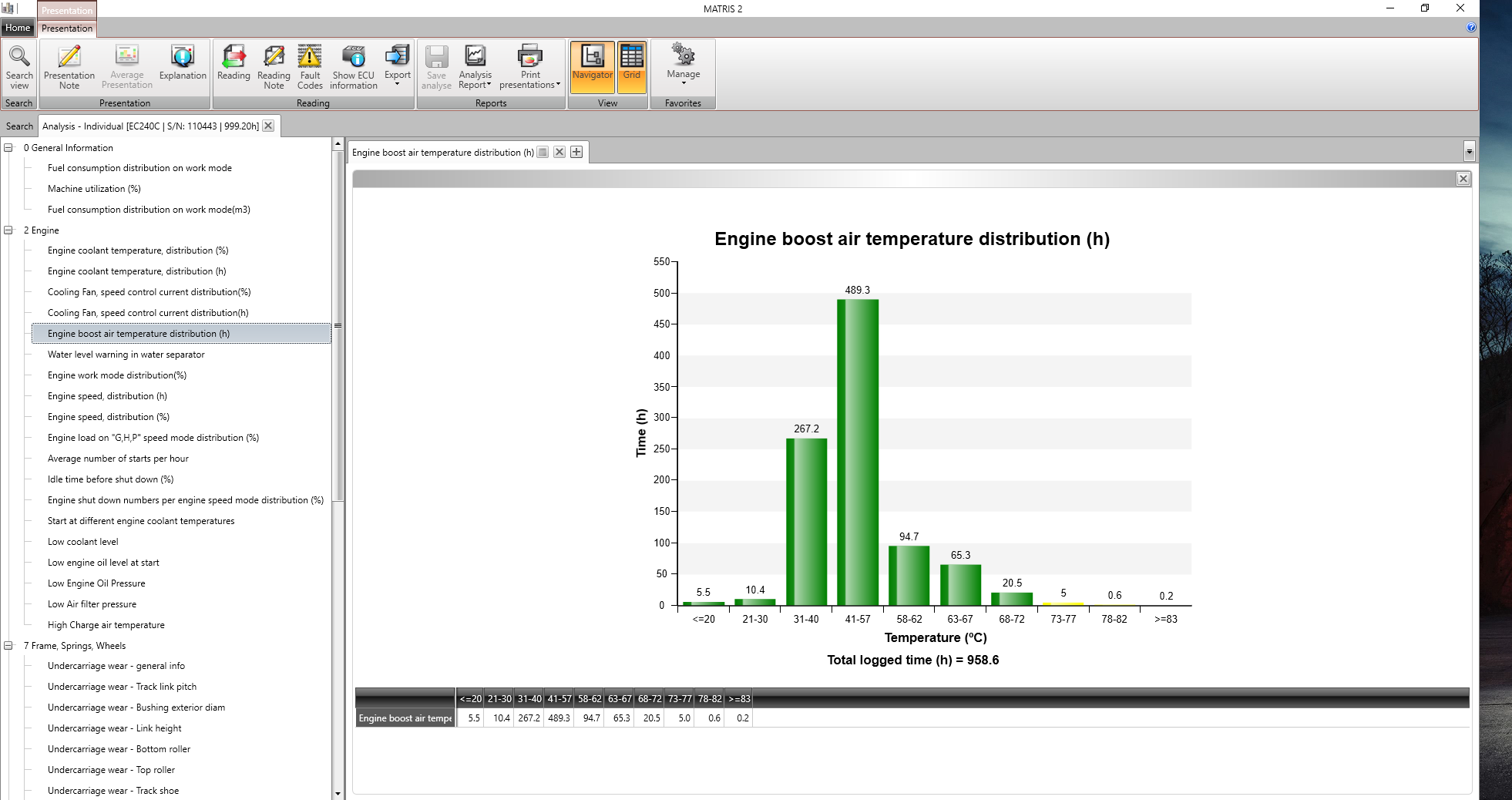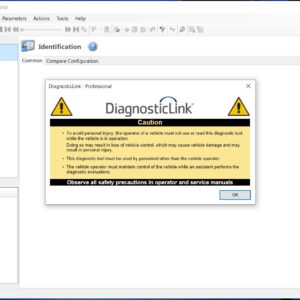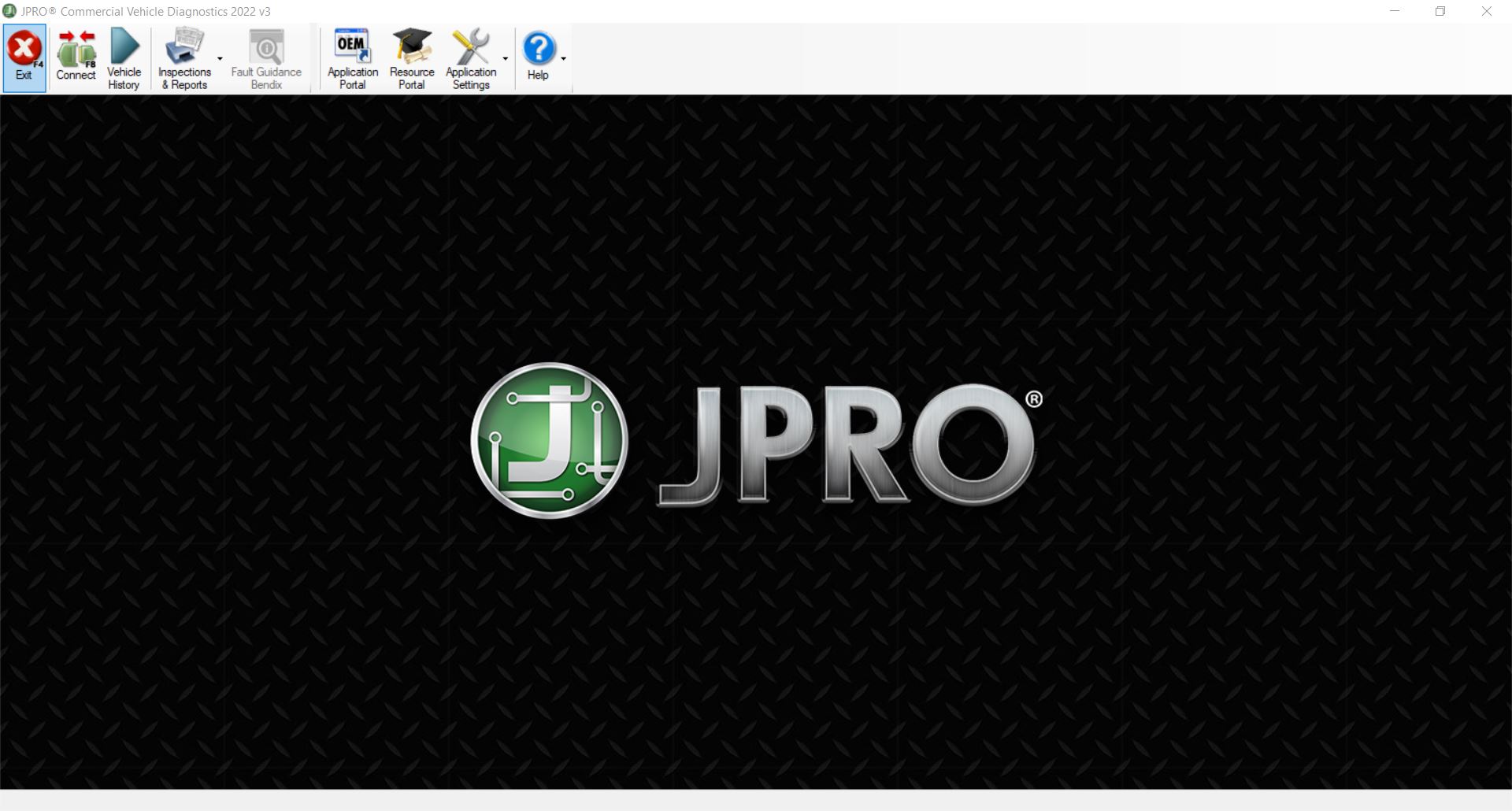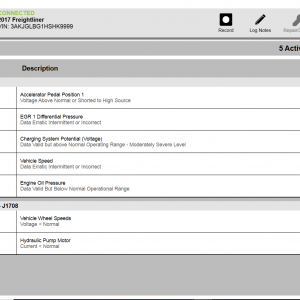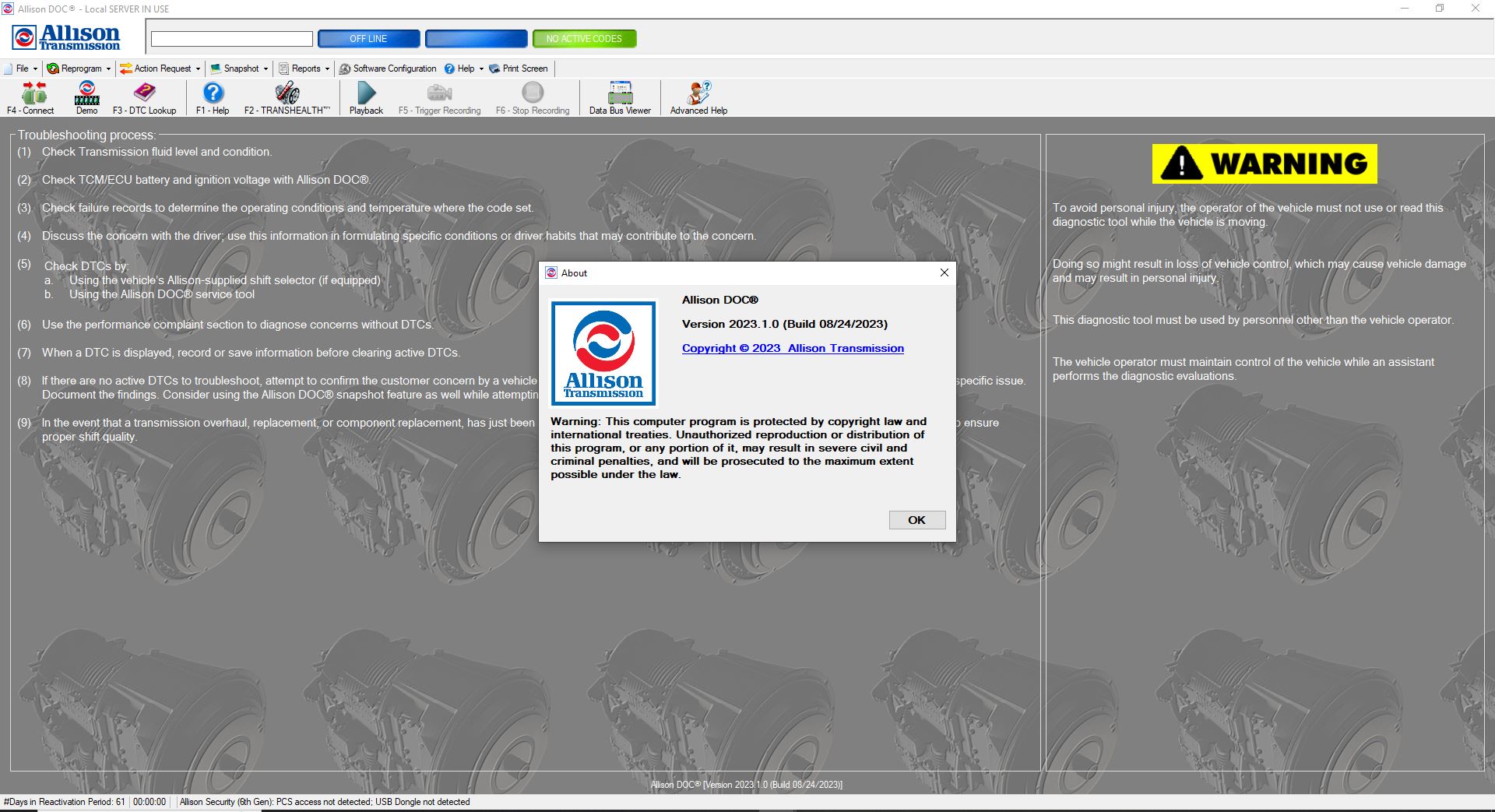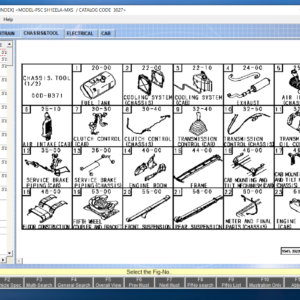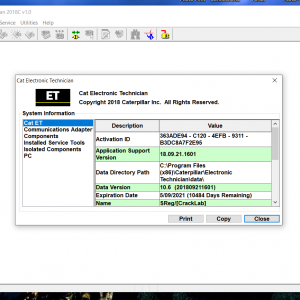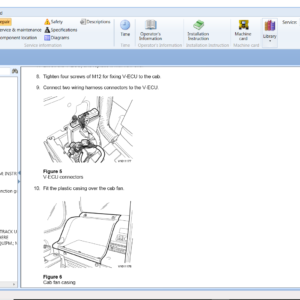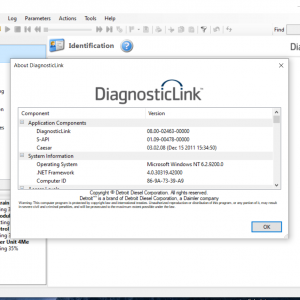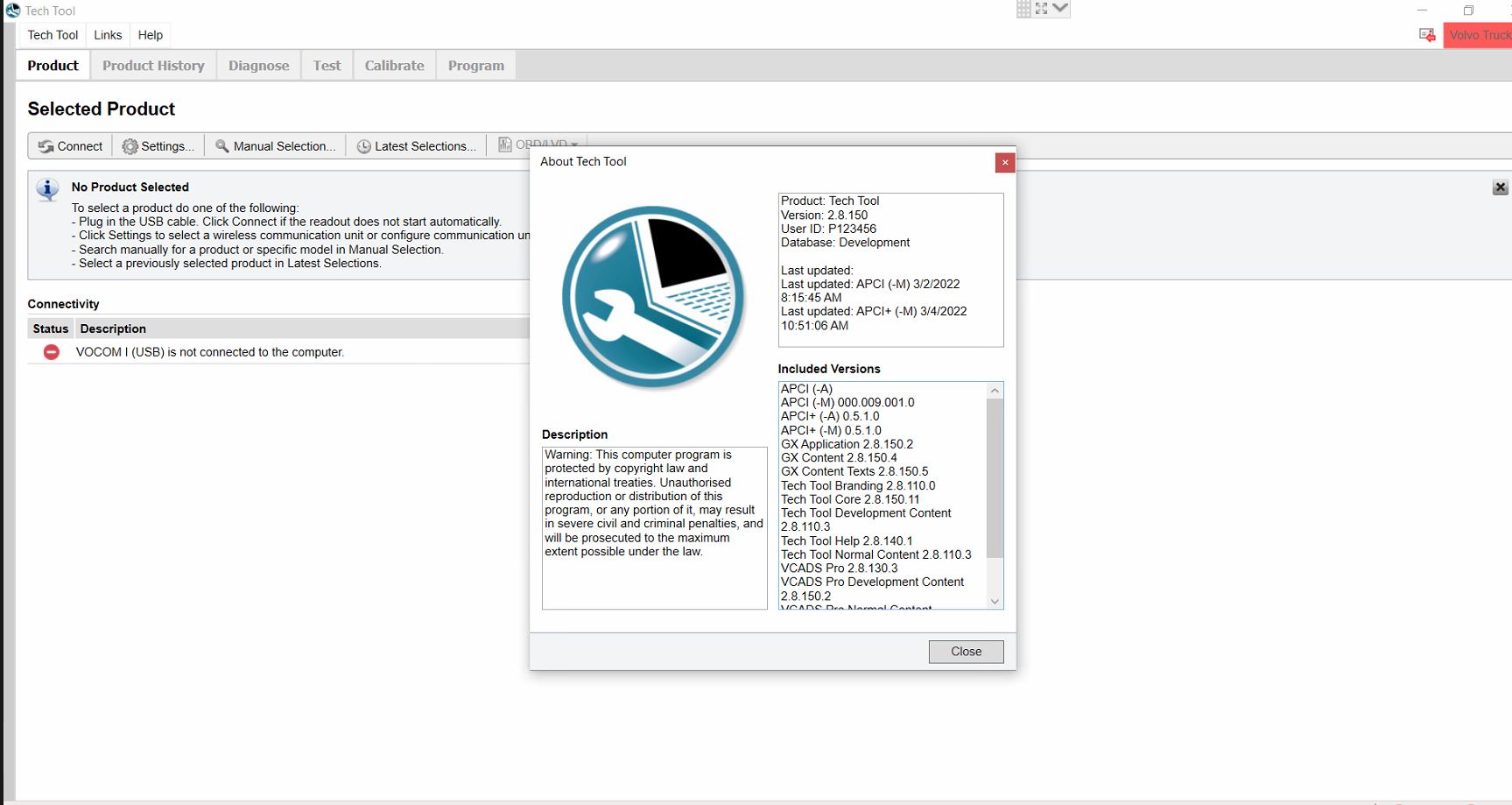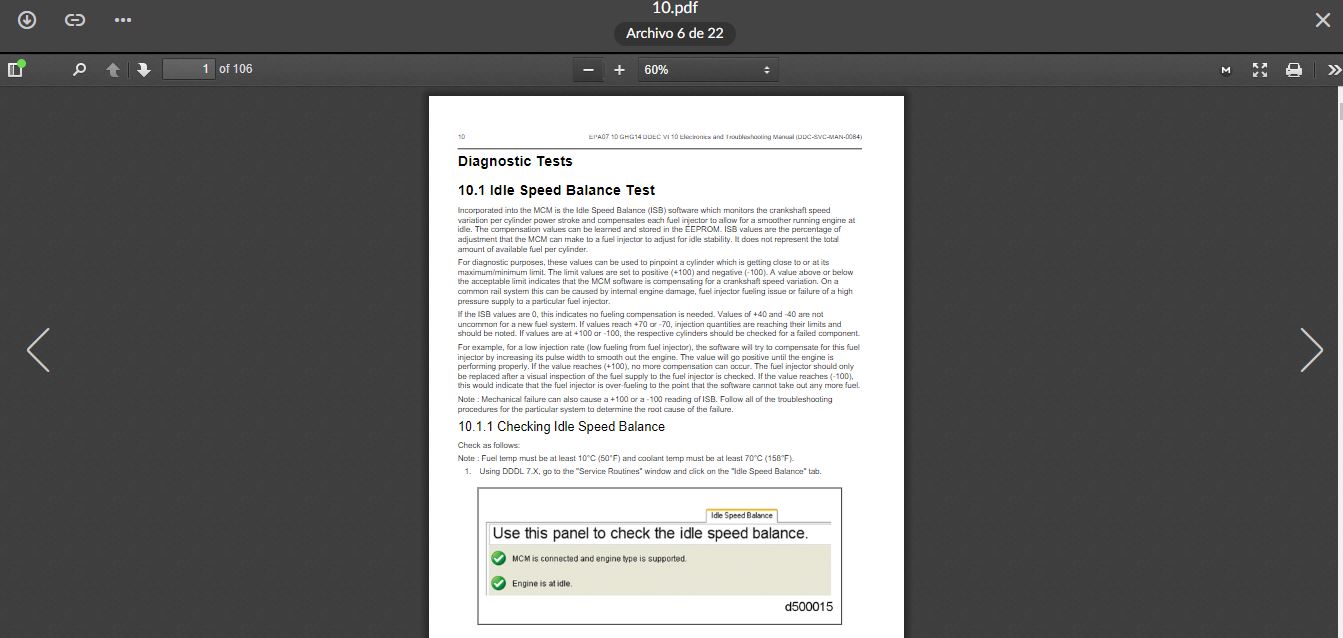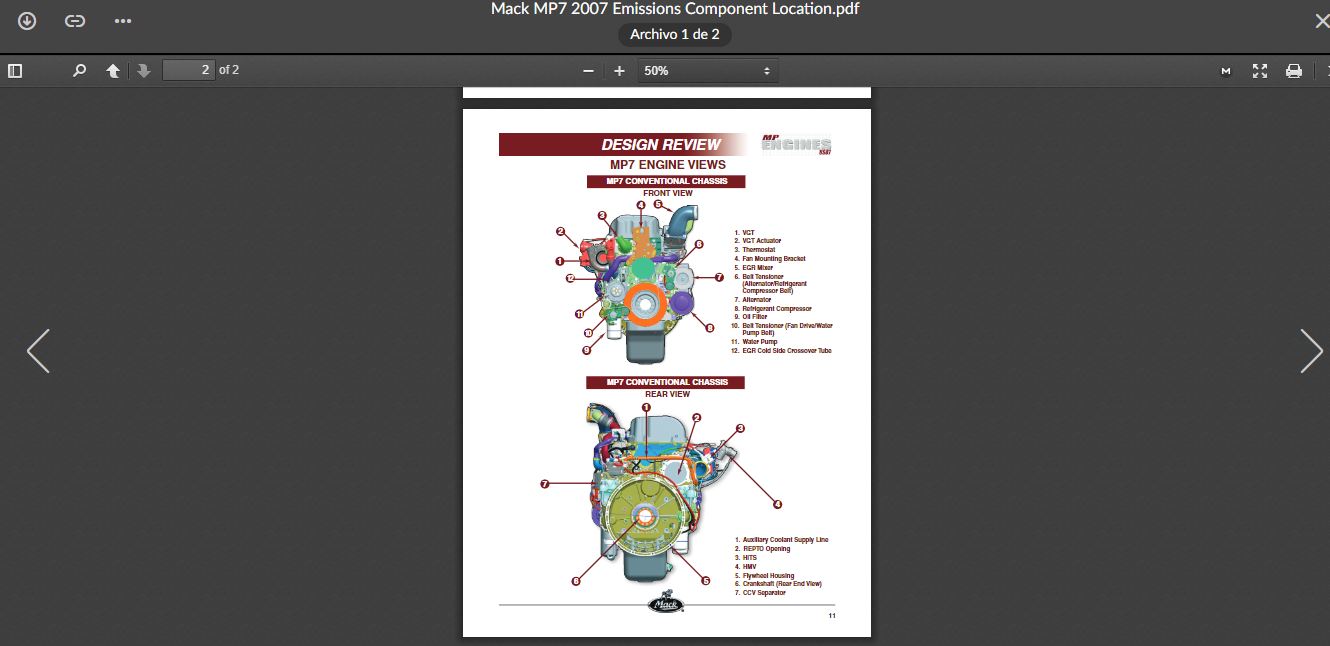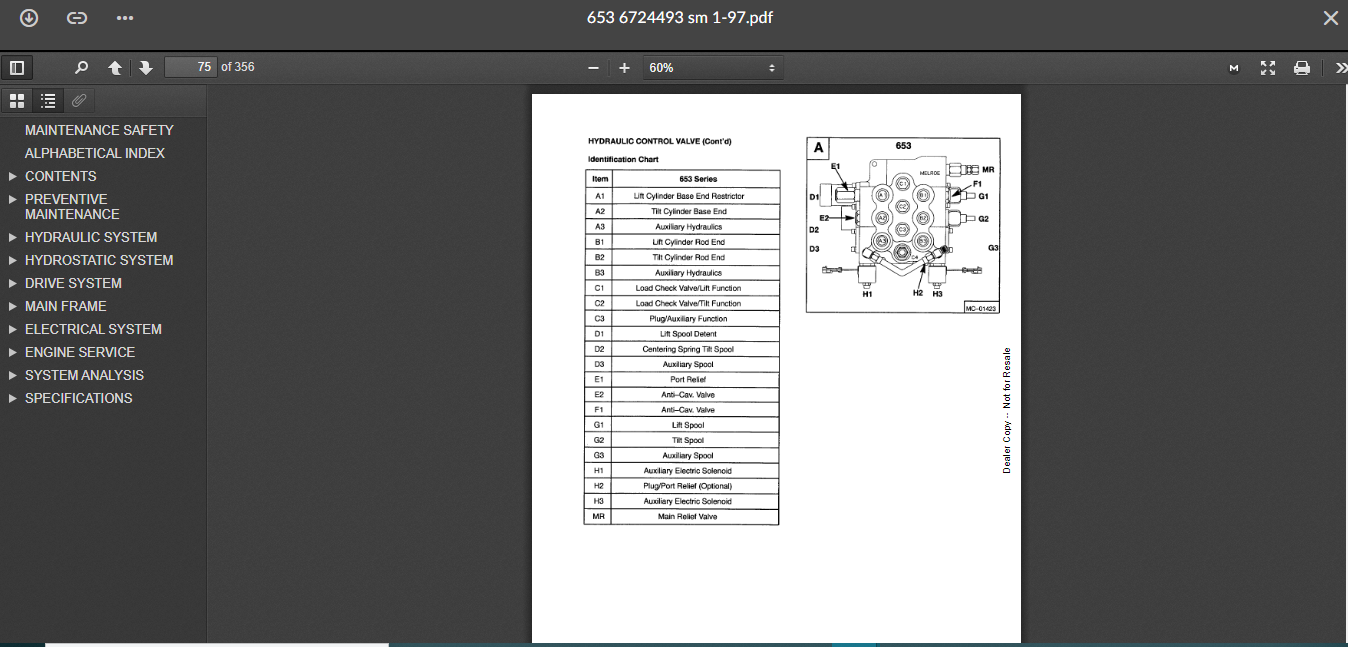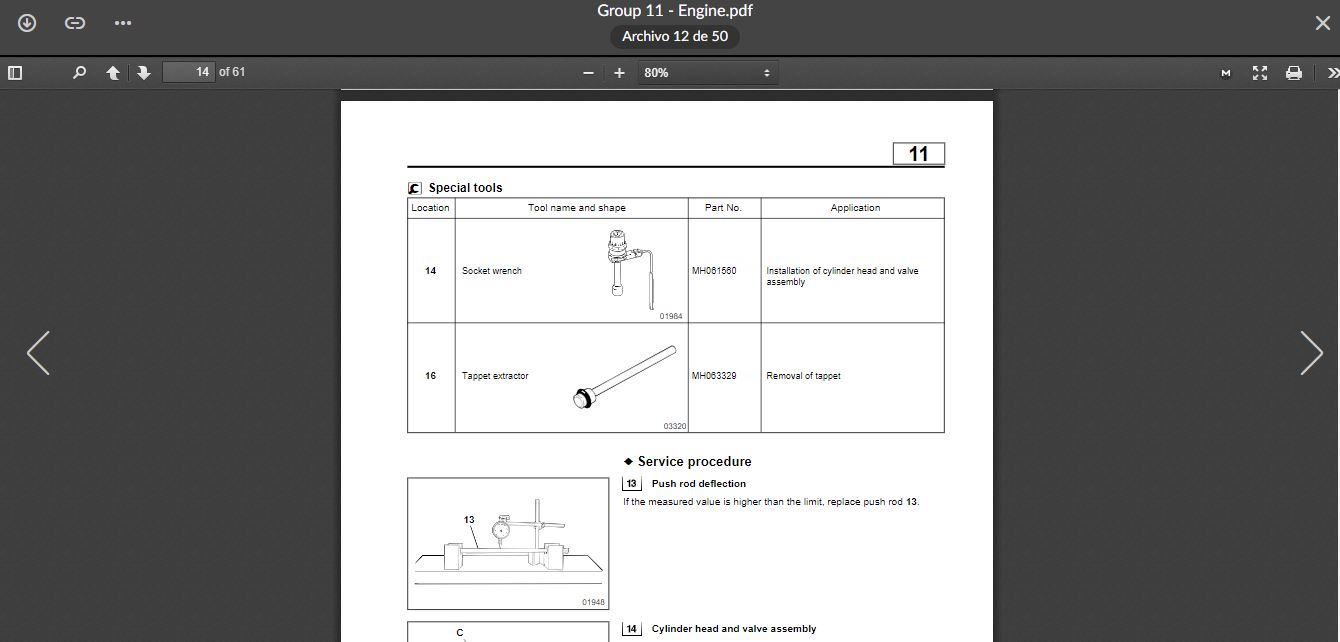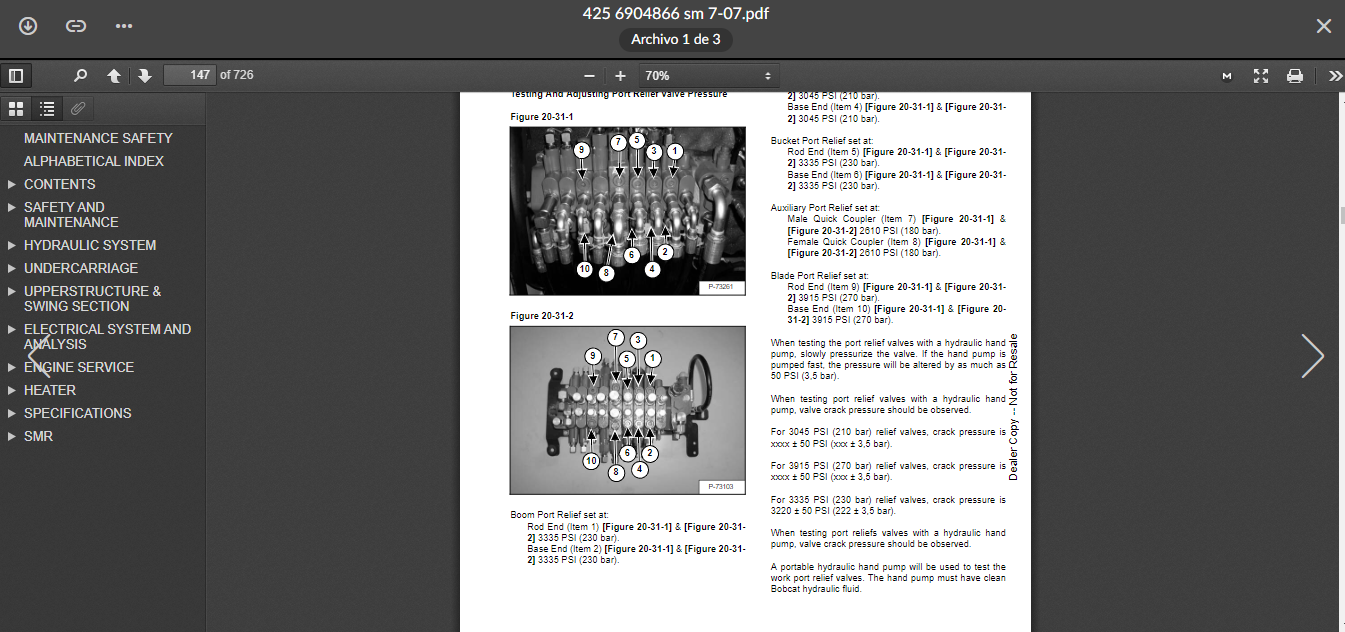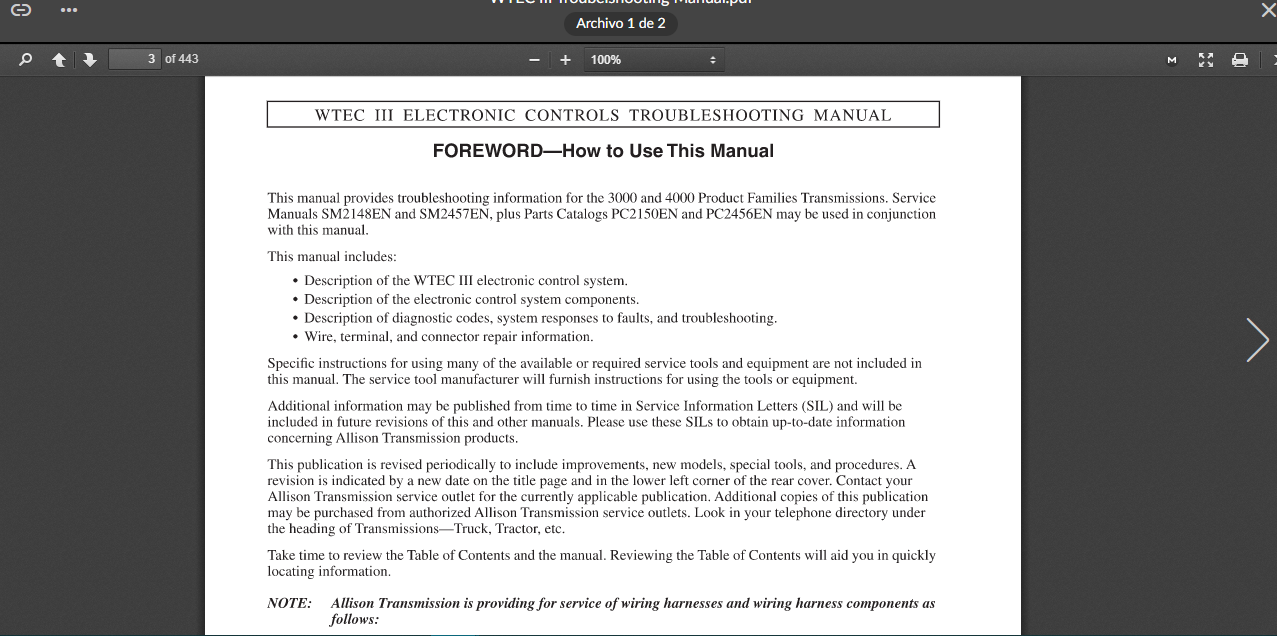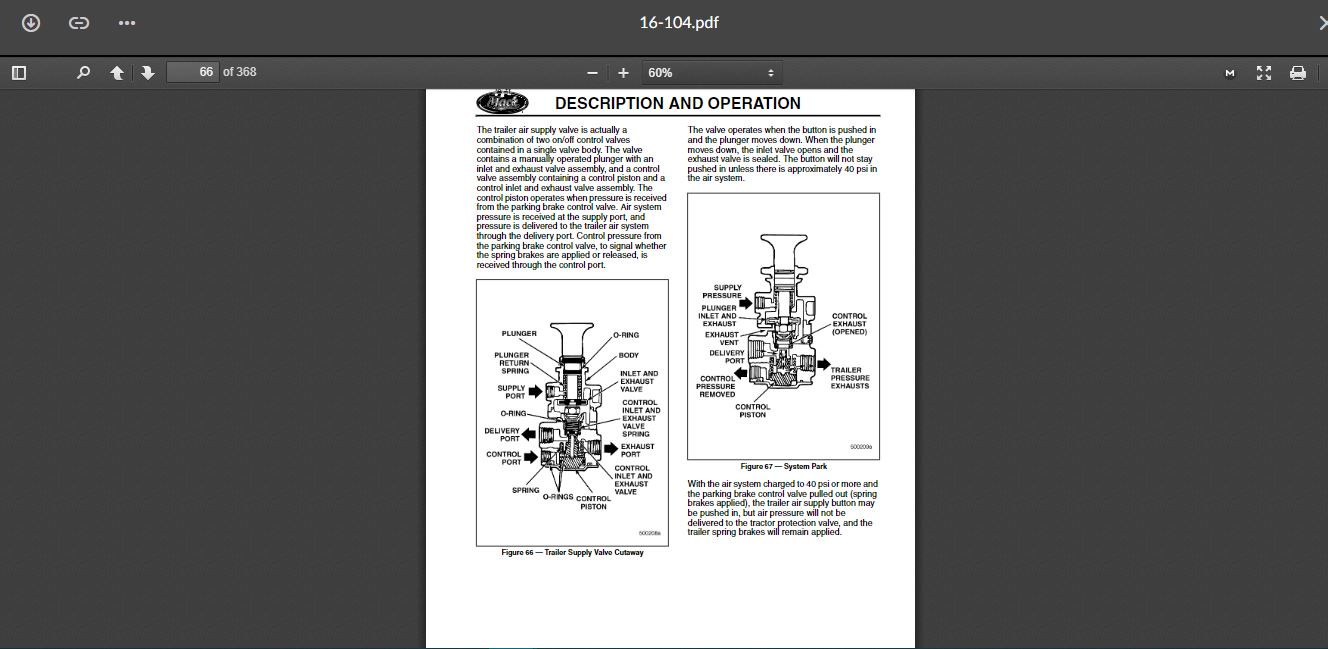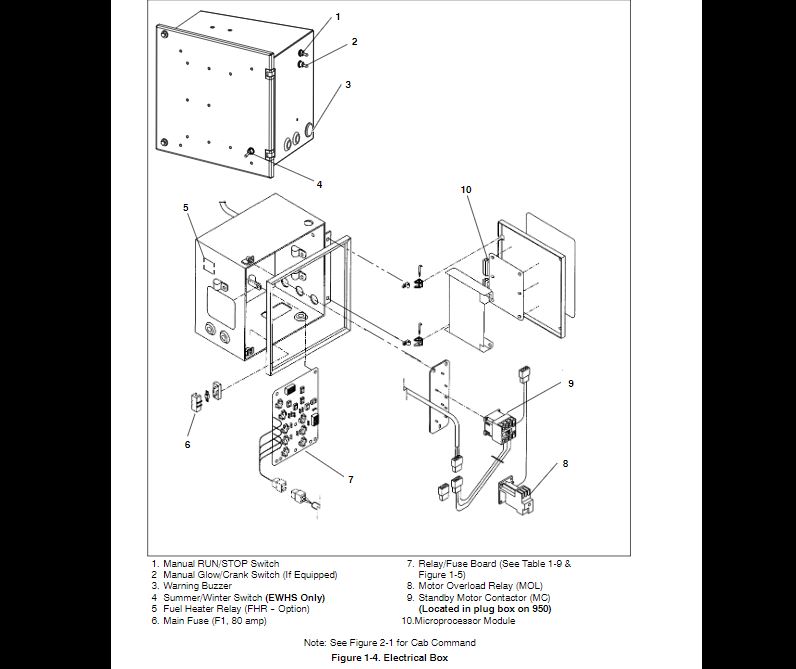Allison 3000 & 4000 Gen 4 Fault Code: P2670 Actuator Supply Voltage 2 (HSD2) Low
DIAGNOSTIC RESPONSE:
Yes DNS, SOL OFF (hydraulic default)
CIRCUIT DESCRIPTION:
The high side drivers are connected to the high side circuits of the solenoids and commanded on during normal operation. The high side drivers serve as a master switch to supply battery voltage to the low side drivers. High side drivers are turned on during TCM initialization and remain on during normal operation. High side drivers are turned off during cranking and for certain diagnostic responses. The low circuit diagnostic is determined by monitoring the status of the low side drivers and high side drivers voltage. If two or more of the low side drivers circuits are detected by the TCM in a failed low state that are supplied by a particular high side driver circuit, and the high side drivers voltage is below 6V, the problem is assumed to be on the high side of the load and a high side driver fault becomes active instead of two or more low side driver faults becoming active. There may or may not be low side driver faults present with this DTC. High Side Driver 2 (HSD2) supplies battery voltage to the Pressure Control Solenoid 1 (PCS1), Pressure Control Solenoid 2 (PCS2), Pressure Control Solenoid 3 (PCS3), and Shift Solenoid 1 (SS1) via wire 171. The TCM regulates control current to the solenoids by switching the appropriate low side driver on and off.
CONDITIONS FOR RUNNING THE DTC:
1. DTC enabled with ignition ON, engine OFF, and battery voltage greater than 9 volts.
2. HSD2 is commanded ON.
3. DTC disabled while engine is cranking longer than 4 seconds, and battery voltage is less than 10 volts.
4. DTC re-enabled once engine is running and TCM is initialized normally.
CONDITIONS FOR SETTING THE DTC:
This DTC sets when the TCM detects two or more low side drivers connected to HSD2, e.g., PCS1, PCS2, PCS3, or SS 1 low side drivers have been detected in a failed low state and HSD2 voltage is less than 6 volts.
ACTION TAKEN WHEN THE DTC SETS:
When DTC P2670 is active:
1. The DTC sets while in a forward range, then shifts to another forward range. If failure occurs while in Neutral (N), the transmission remains in Neutral (N). If failure occurs while in Reverse (R), the transmission remains in Reverse (R) or shifts to Neutral (N). Once range is attained, transmission is locked in this range and there is no response to shift selector requests.
2. The TCM inhibits TCC engagement.
3. Main Modulation is inhibited.
4. DTC is stored in the TCM history.
5. The CHECK TRANS light illuminates.
6. The TCM freezes shift adapts (DNA).
CONDITIONS FOR CLEARING THE DTC:
Use the diagnostic tool to clear the DTC from the TCM history. The TCM automatically clears the DTC from the TCM history if the vehicle completes 40 warm-up cycles without failure.
DIAGNOSTIC AIDS:
DTC P2670 can be caused by:
1. HSD2 circuit issues such as:
– W171 shorted to another wire in chassis harness.
– W171 (terminal 6 of 20-way) shorted to another wire in the internal transmission harness.
2. Two or more low side driver circuit issues with HSD2, PCS1, PCS2, PCS3, or SS1.
3. PCS1 issues such as:
– W136 shorted to another wire in chassis harness.
– W136 shorted (terminal 4 of 20-way) to another wire in the internal transmission harness.
– PCS 1 shorted.
4. PCS2 issues such as:
– W152 shorted to another wire in chassis harness.
– W152 shorted (terminal 5 of 20-way) to another wire in the internal transmission harness.
– PCS2 shorted.
5. PCS3 issues such as:
– W133 shorted to another wire in chassis harness.
– W133 shorted (terminal 9 of 20-way) to another wire in the internal transmission harness.
– PCS3 shorted.
6. SS 1 issues such as:
– W151 shorted to another wire in chassis harness.
– W151 shorted (terminal 10 of 20-way) to another wire in the internal transmission harness.
– SS 1 shorted.
7. Broken or defective connector assemblies allowing pushed back pins to short together.
8. Unlocked connectors, expanded terminals, unlocked pins, causing open circuit in connectors.
9. Defective TCM.
Review applicable information in Control System and Transmission Specifications to find additional circuit specifications, system and connector diagrams, and troubleshooting tips.
Related
-
Bobcat Service Library [03.2019] Service, Operator, Maintenance, Bulletines, etc full update
Bobcat $110.00Rated 0 out of 5 -
10 IN 1 FOR CAT SIS Caterpillar 2021 Full Service Dealer INCLUDING CAT 2019 C
CAT $110.00Rated 0 out of 5
-
CAT Engine Reprogramming Tool for flash programming C1.8, C2.4, C3.8 & C3.3B + Guide
CAT $50.00Rated 0 out of 5 -
DETROIT DDDL 8.14 SP3 – Detroit Diesel Diagnostic Link 8.14 SP3 2021 ( 1PC )
Detroit $73.00Rated 0 out of 5 -
Bobcat Service Library [03.2019] Service, Operator, Maintenance, Bulletines, etc full update
Bobcat $110.00Rated 0 out of 5 -
Volvo PROSIS Offline 2019 Parts Catalog Installation Service
Trucks software $45.00Rated 0 out of 5 -
Detroit Diesel Diagnostic Link DDDL 8.0 PRO PROFESSIONAL Software trucks
Detroit $25.00Rated 0 out of 5 -
Scania SDP3 2.48.6 Diagnosis & Programming for VCI 3 VCI3 without Dongle
Scania $30.00Rated 0 out of 5 -
premium volvo tech tool update 2.8.150 diagnostic software 1pc
Trucks software $150.00Rated 0 out of 5
Related products
-
Allison 1000 & 2000 Gen 4 Fault Codes: P0870 Transmission Pressure Switch Solenoid E Circuit
1000 & 2000 Gen 4 $50.00Rated 0 out of 5 -
Allison 1000 & 2000 Gen 4 Fault Codes: P0847 Transmission Pressure Switch Solenoid D Circuit Stuck Closed
1000 & 2000 Gen 4 $50.00Rated 0 out of 5 -
Allison 1000 & 2000 Gen 4 Fault Codes: P0876 Transmission Reverse Pressure Switch Circuit Stuck Open
1000 & 2000 Gen 4 $50.00Rated 0 out of 5 -
Allison 1000 & 2000 Gen 4 Fault Codes: U0031 J1850 (Class 2) Serial Data Communication Link Low
1000 & 2000 Gen 4 $50.00Rated 0 out of 5 -
Allison 1000 & 2000 Gen 4 Fault Codes: U1041 J1850 (Class 2) ABS Controller State of Health Failure
1000 & 2000 Gen 4 $50.00Rated 0 out of 5 -
Allison 1000 & 2000 Gen 4 Fault Codes: U0100 CAN Bus ECM Error
1000 & 2000 Gen 4 $50.00Rated 0 out of 5 -
Allison 1000 & 2000 Gen 4 Fault Codes: U1000 Class 2 Loss of Serial Data Communication
1000 & 2000 Gen 4 $50.00Rated 0 out of 5 -
Allison 1000 & 2000 Gen 4 Fault Codes: P0123 Pedal Position Sensor Circuit High Voltage
1000 & 2000 Gen 4 $50.00Rated 0 out of 5 -
Allison 1000 & 2000 Gen 4 Fault Codes: P2773 Torque Control Request Ignored – ECM/TCM
1000 & 2000 Gen 4 $50.00Rated 0 out of 5 -
Allison 1000 & 2000 Gen 4 Fault Codes: P0846 Transmission Pressure Switch Solenoid D Circuit Stuck Open
1000 & 2000 Gen 4 $50.00Rated 0 out of 5 -
Allison 1000 & 2000 Gen 4 Fault Codes: P1891 Engine Throttle Position Sensor Pulse Width Modulation (PWM) Signal Low Input
1000 & 2000 Gen 4 $50.00Rated 0 out of 5 -
Allison 1000 & 2000 Gen 4 Fault Codes: U1096 J1850 (Class 2) IPC Controller State of Health Failure
1000 & 2000 Gen 4 $50.00Rated 0 out of 5 -
Allison 1000 & 2000 Gen 4 Fault Codes: P0873 Transmission Pressure Switch Solenoid E Circuit High
1000 & 2000 Gen 4 $50.00Rated 0 out of 5
-
SERVICE MANUAL DETROIT DIESEL EPA 07, EPA 10, GHG 14 TROUBLESHOOTING
DETROIT $38.00Rated 0 out of 5


